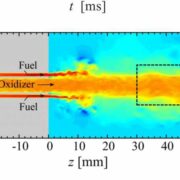By 2025, carbon dioxide levels in Earth’s atmosphere will be highest than at any time in the last 3.3 million years of earth history

By 2025, atmospheric carbon dioxide (CO2) stages will very probably be highest than they were during the warmest duration of the last 3.3 million years, carbon dioxide levels in Earth’s atmosphere will be highest because of changing life style across the world , in line with new research by means of a team from the University of Southampton published today in Nature Scientific Reports.
The group studied the chemical composition of tiny fossils, approximately the size of a pin head collected from deep ocean sediments of the Caribbean Sea. They used this statistics to reconstruct the concentration of CO2 in Earth’s atmosphere during the Pliocene epoch, around three million years ago whilst our planet became more than three°C hotter than nowadays with smaller polar ice caps and higher worldwide sea-tiers.
Dr. Elwyn de los angeles Vega, who led the study, said: “Knowledge of CO2 during the geological past is of incredible interest as it tells us how the weather gadget, ice sheets and sea-degree formerly spoke back to the expanded CO2 ranges. We studied this unique c language in unprecedented detail because it provides super contextual facts for our present day weather state.”
To determine atmospheric CO2, the crew has used the isotopic composition of the detail boron, naturally present as an impurity inside the shells of zooplankton known as foraminifera or ‘forams’ for short. These organisms are around 1/2 a millimeter in size and gradually gather in massive quantities at the seabed, forming a treasure trove of records on Earth’s past climate. The isotopic composition of the boron in their shells is dependent on the acidity (the pH) of the seawater in which the forams lived. There is a near relationship between atmospheric CO2 and seawater pH, that means past CO2 can be calculated from cautious size of the boron in ancient shells.
Careful chemical treatment to split boron from forams and degree their isotopic composition inside the Geochemistry Laboratory on the University of Southampton.
Dr. Thomas Chalk, a co-creator of the look at, added: “Focussing on a beyond warm c programming language when the incoming insolation from the Sun turned into similar to nowadays offers us a manner to examine how Earth responds to CO2 forcing. A striking result we’ve located is that the warmest a part of the Pliocene had between 380 and 420 parts in keeping with million CO2 inside the atmosphere. This is much like these days’s price of around 415 parts in step with million, displaying that we’re already at levels that inside the past were associated with temperature and sea-degree significantly higher than these days. Currently, our CO2 tiers are growing at approximately 2.five ppm according to year, meaning that by 2025 we can have exceeded something seen within the closing three.three million years.”
Professor Gavin Foster, who become additionally involved within the have a look at, continued: “The purpose we don’t see Pliocene-like temperatures and sea-ranges yet today is as it takes some time for Earth’s weather to completely equilibrate (seize up) to better CO2 stages and, due to human emissions, CO2 tiers are still climbing. Our effects provide us an idea of what is in all likelihood in shop once the system has reached equilibrium.”
Concluded Dr. Vega, “Having handed Pliocene levels of CO2 by means of 2025, future tiers of CO2 are not probable to have been experienced on Earth at any time for the closing 15 thousands and thousands years, because the Middle Miocene Climatic Optimum, a time of even more warmth than the Pliocene.”
The paper, “Atmospheric CO2 all through the Mid-Piacenzian Warm Period and the M2 glaciation,” is posted in Nature Scientific Reports.

























